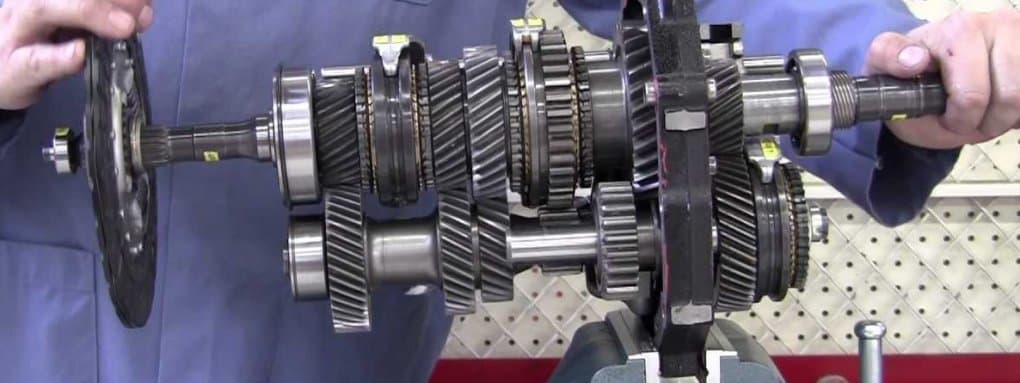The diagram below shows a very simple two-speed transmission in neutral:
· The green shaft comes from the engine through the clutch. The green shaft and green gear are connected as a single unit. (The clutch is a device that lets you connect and disconnect the engine and the transmission. When you push in the clutch pedal, the engine and the transmission are disconnected so the engine can run even if the car is standing still. When you release the clutch pedal, the engine and the green shaft are directly connected to one another. The green shaft and gear turn at the same rpm as the engine.)
· The red shaft and gears are called the lay shaft. These are also connected as a single piece, so all of the gears on the lay shaft and the lay shaft itself spin as one unit. The green shaft and the red shaft are directly connected through their meshed gears so that if the green shaft is spinning, so is the red shaft. In this way, the lay shaft receives its power directly from the engine whenever the clutch is engaged.
● The yellow shaft is a splined shaft that connects directly to the drive shaft through the differential to the drive wheels of the car. If the wheels are spinning, the yellow shaft is spinning.

· The blue gears ride on bearings, so they spin on the yellow shaft. If the engine is off but the car is coasting, the yellow shaft can turn inside the blue gears while the blue gears and the lay shaft are motionless.
· The purpose of the collar is to connect one of the two blue gears to the yellow drive shaft. The collar is connected, through the splines, directly to the yellow shaft and spins with the yellow shaft. However, the collar can slide left or right along the yellow shaft to engage either of the blue gears. Teeth on the collar, called dog teeth, fit into holes on the sides of the blue gears to engage them.


